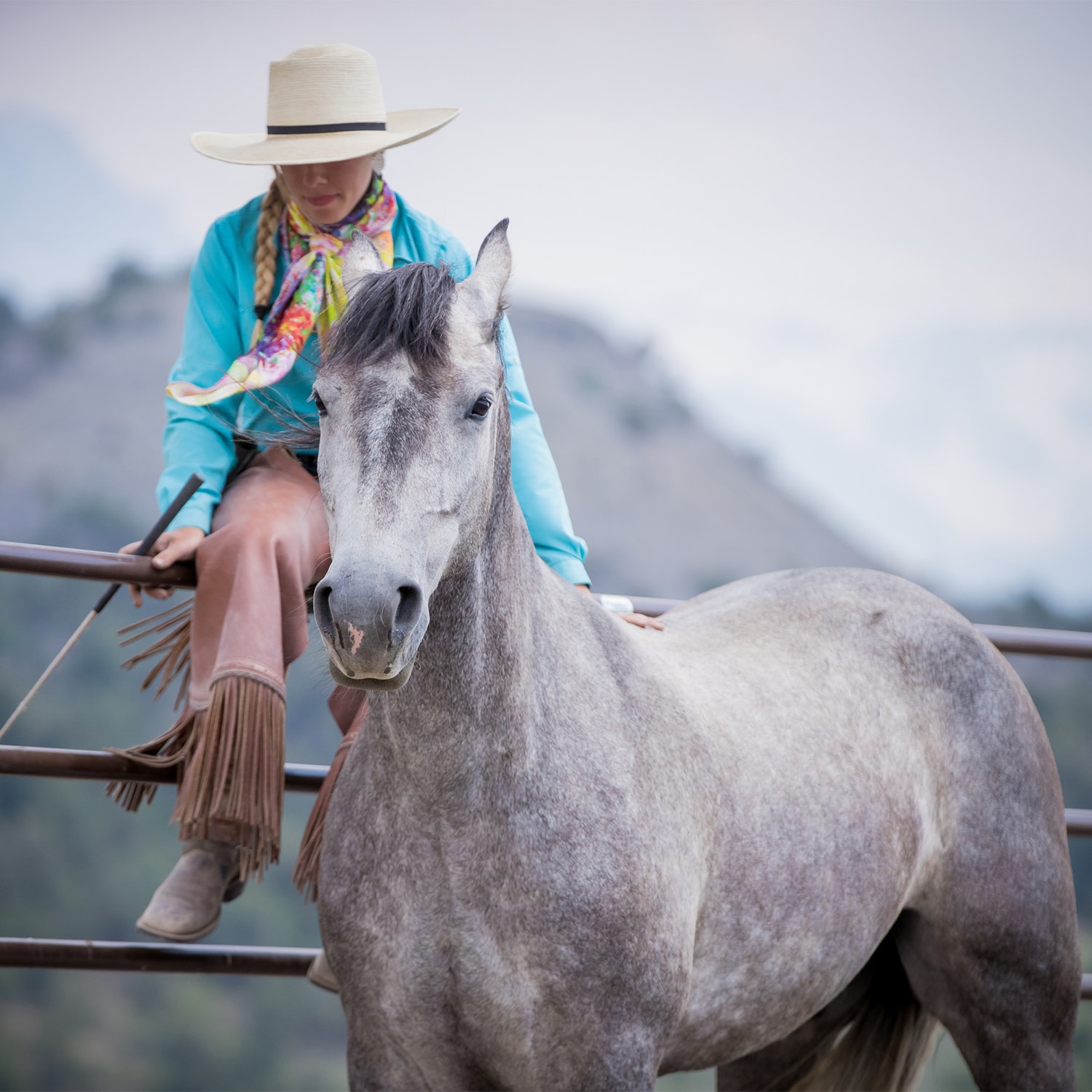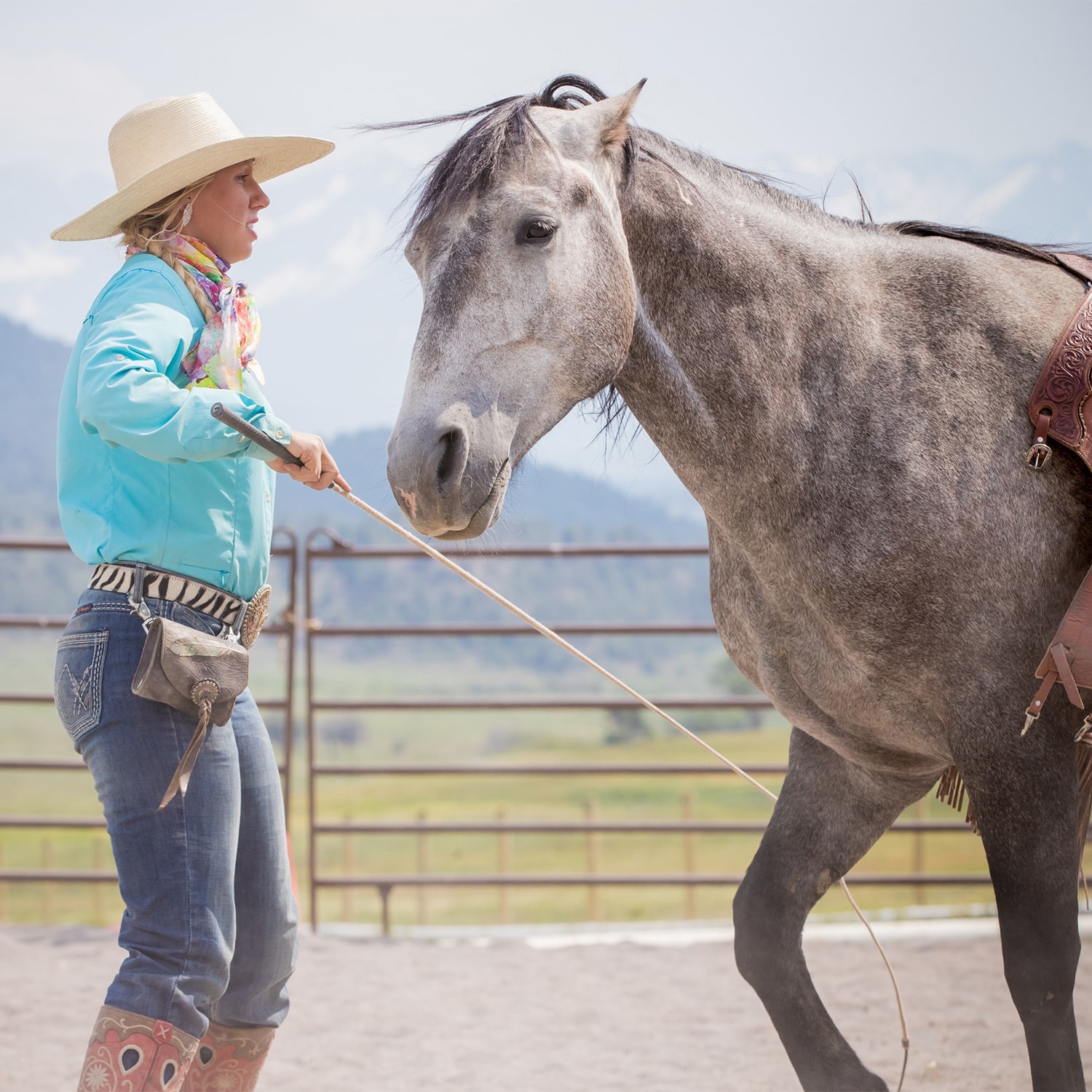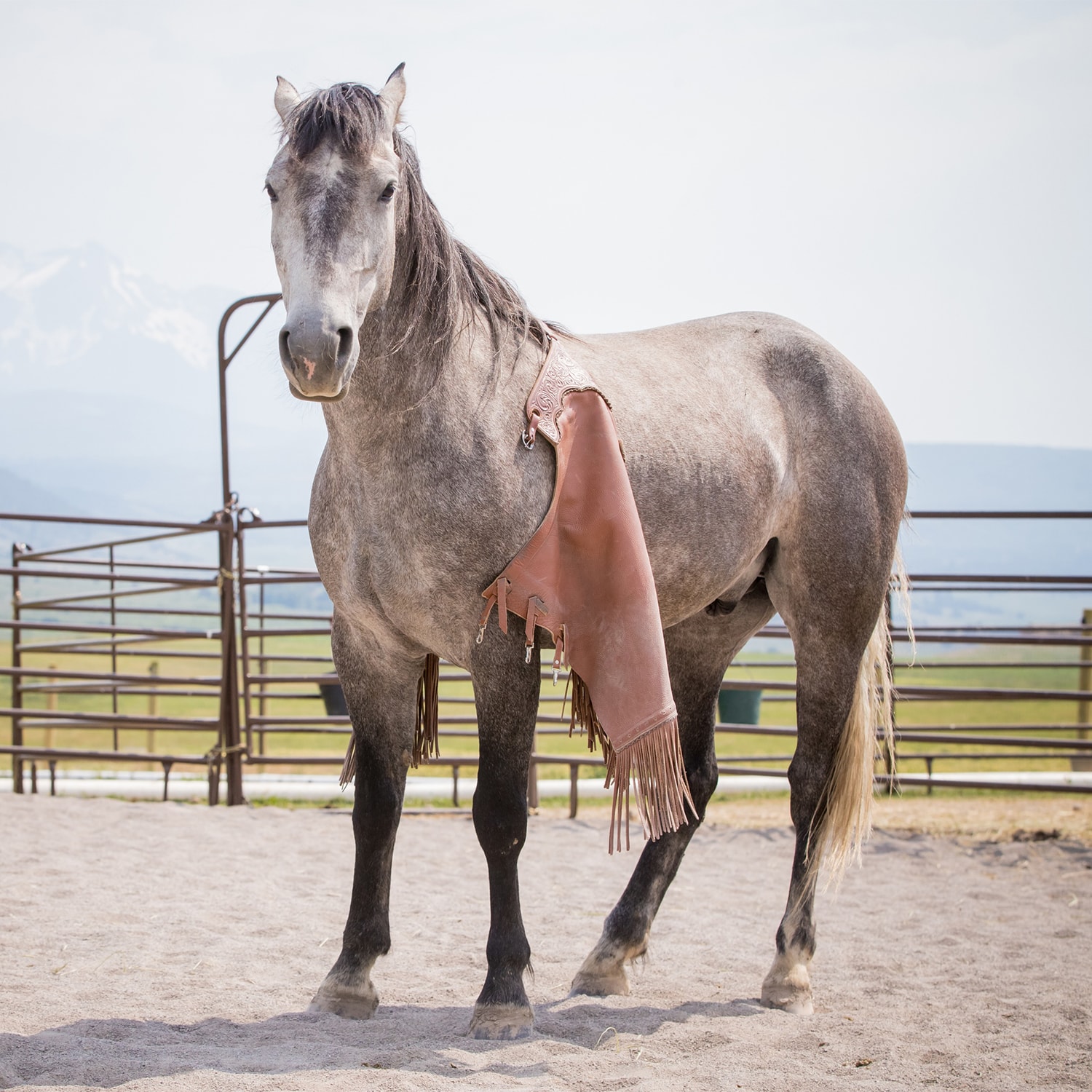
Question:
“Ideally, a horse’s training is started with positive reinforcement, but that’s not always the case. How can someone who has bought a horse that has trust issue change that dynamic?“

Answer:
One of the most important aspects when building trust with a horse is empowering the horse through choice. This means we must set up training scenarios where our horse has the ability to say “no” and a clear “yes.” You may feel resistance to the idea of letting the horse say no; There is a fear that if we let the horse say no, she may never say yes. And I totally understand. I felt the same way for a long time. But here’s the truth: Until the horse has the ability to say no, she never really says yes. And just because she is saying no right now, doesn’t mean she’ll always say no.
In my 5 Golden Rules curriculum, I outline 3 primary methods I use to empower horses through choice; the first is two-way communication. Two-way communication is a form of communication in which one organism is the sender and they transmit a message to another organism, who is the receiver. When the receiver gets the message, they send back a response, acknowledging the message was received. This differs drastically from the traditional one-way communication where the trainer tells the horse to do something, and his response of feeling uncomfortable doing it goes unacknowledged.
Through two-way communication, we can create an ongoing dialogue with our horse so that she can have an active voice. I establish this through the creation of start signals the horse uses to say “Yes, I’m ready for this behavior” and end signals the horse uses to say, “No, I’m not ready for this yet.” Doing so drastically reduces fear and anxiety and builds trust.
An example of the start signal could be waving a saddle pad before placing it on a colt’s back. If there is tension when you wave the saddle pad, then the horse is saying they aren’t ready for it to be placed there. If the horse is calm and relaxed, she is saying she’s ready. Another example is something called the “start button technique,” which can be used in conjunction with positive reinforcement training. I learned this while studying with marine mammal trainers and started applying it with equines. For my application, it entails the horse touching a cone (or other stationary target) to signal they are ready for a behavior. The behavior could be picking up their feet, taking a saddle, accepting touch, mounting, or even veterinary care such as the prick of a needle.
I used the start button technique with Zena, my 5-year-old Grants zebra mare who was terrified of needles. Prior to the start button technique, I would prep her with the prick of a toothpick or paperclip. This would require a 25-foot line with a chain in order to prevent her from bolting (and bolt she would as soon as I took the paper clip out of my pocket). She would eventually relax enough to “tolerate” the prick without bolting, but the bolting would never totally disappear. After using the start button technique, I can have Zena at liberty (no halter, ropes, etc) and she will touch the cone and willingly and calmly stand for me to prick her (quite hard) with a paperclip or toothpick that transfers to the actual prick of a needle. It is truly incredible what animals will willingly do when they have a choice and control over when the scary thing happens and when and how to stop it.
I recently had a conversation about start signals with Dr. Temple Grandin, a prominent author and speaker on autism and animal behavior and professor of Animal Science at Colorado State University. She said that the ability to control when a stimulus begins and ends is also crucial to building confidence in children with autism. It has been found that for an autistic child afraid of the loud sound of a blender, for example, when the child has the ability to turn the blender on, fear almost immediately diminishes. In a similar example, a child afraid of sirens was taken to the firehouse and allowed to turn on the sirens of the firetruck himself. After doing so, his fear also was greatly reduced.

Question:
“What piece of advice would you offer horse owners when working with their horses?“

Answer:
One of the biggest pieces of advice I can offer horse owners when working with their horses is to spend time developing their “refined listening” skill to see the subtle signs of discomfort the horse is communicating. This can be used to avoid full-blown reactions as well as develop a training program that is process oriented and smooth for the horse. I’ve heard Buck Brannaman say it this way: “If you can keep a horse’s expression the same throughout a ride, without getting worried or anxious or troubled…Achieve that and you can achieve more than 99% of horse people.” So this goes back to the concept of shaping I mentioned earlier; Learn how to recognize a horse’s smallest try and reward it. Learn how to break complex behaviors down into small approximations so that you can always set your horse up for success. For example, if you have a horse who can’t stand still, begin with asking him to stand still for however long he can be successful. This may only be 3 seconds; that’s fine, start there. Advance to 5 seconds, then 10, then 30, then a minute, and so forth. But always find a place where the horse can be successful; where he can come out a winner.

